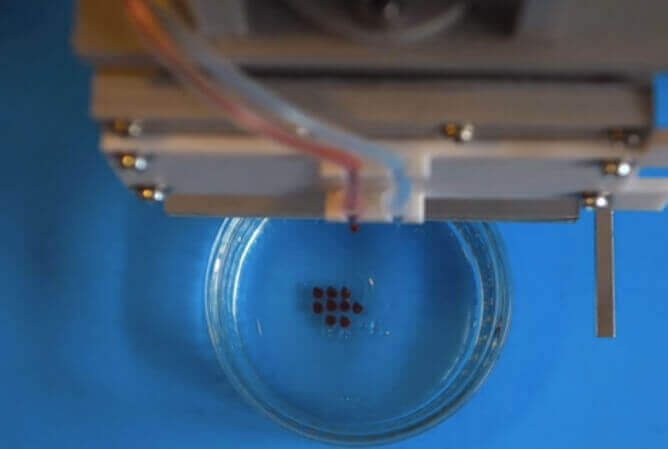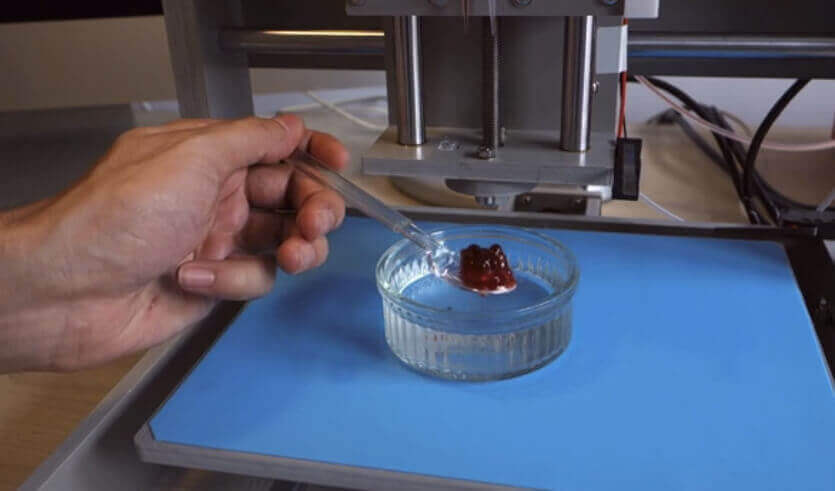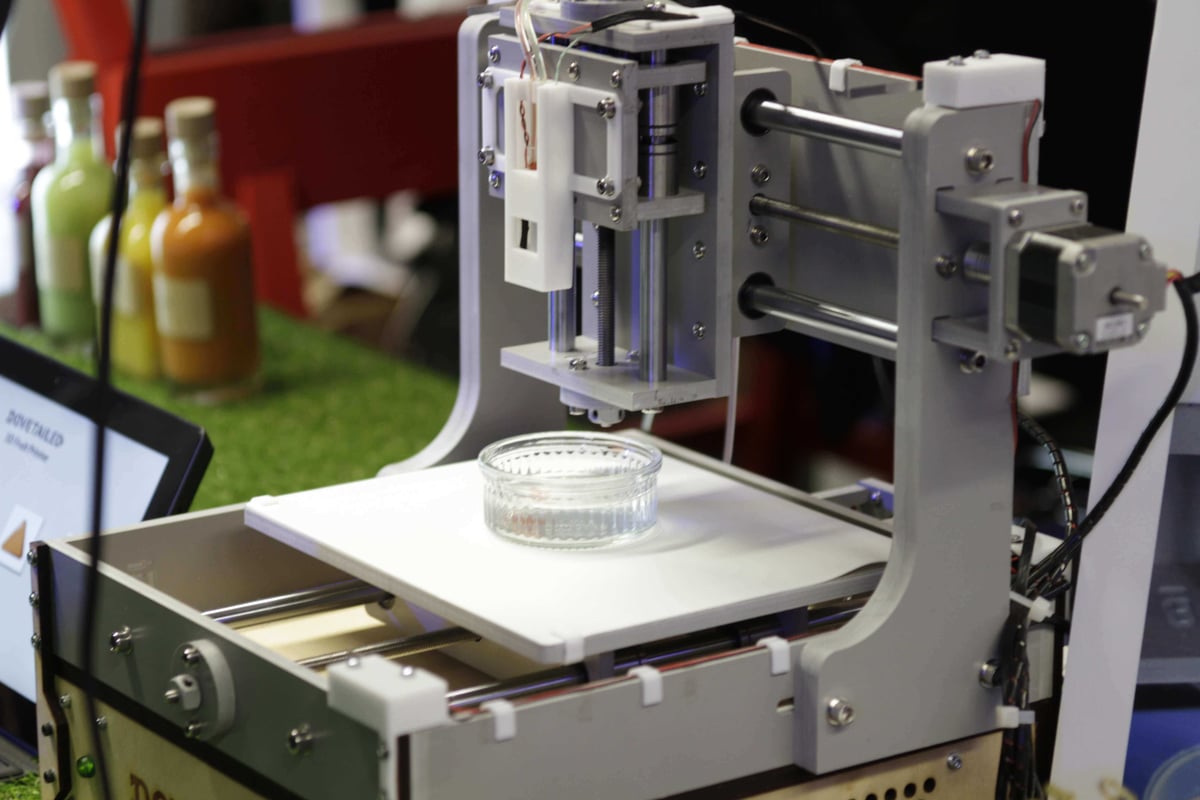Why you should read this? Because this article explains why your dessert looks like strawberry but tastes like rasberry.
To print three-dimensional figures with chocolate you basically have to melt it and use a syringe to design the layers. To do it with pasta or meat you just use the syringe extruder without even heating up the material. To print in 3D with sugar you can use powder-based technique similar to that which is used to make 3D selfies. And if you wanted to 3D print with fruit juice? You would turn to molecular gastronomy.
In general, when you talk about cooking and technology, especially around Catalunya (where chef Ferran Adrià is considered by many one to be of its most renowned representatives) you often end up intersecting with the world and the techniques of molecular gastronomy. Some of the elements which characterize the processes of molecular gastronomy, such as the use of sodium alginate to induce the “jellification” and “solidification” of liquids, can also be used in digital extrusion based manufacturing process, including 3D printing and even bioprinting (3D printing of organic tissues).
3D Printing with Spherification

The continuous evolution of molecular gastronomy, combined with 3D printing processes, could one day give us access to a machine similar to Star Trek’s replicator, which had in instant food preparation some of its most common uses. While several chemical and physical transformations are currently used in molecular cooking, that of jellification is at this moment the most compatible with 3D printing because it can allow liquid materials to become gelatinous and thus be extruded. In fact, jellification is also used in another technique, called “spherification”, where alginic acid is used to prepare tiny caviar-like bubbles, with gelatinous exterior layers and a liquid interior.
One Cambridge-based company called Dovetailed demonstrated the first 3D printing application of this technique by developing a “3D fruit printer”. In the first experiment carried out by its inventor, Dr. Gabriel Villar, these spheres were made using a strawberry flavored juice and subsequently assembled together to form an artificial fruit with the shape of a … raspberry. The machine was first presented at the TechFoodHack of Cambridge, as a project co-sponsored by Microsoft Research.
Programming a Fruit’s Flavor

To create the caviar-like bubble, the Dovetailed team first mixes the juice with the alginic acid and then poured the mixture into a bath of calcium: the reaction that resulted created a kind of skin around a tiny ball of liquid. The 3D printer was then able to digitally assemble these tiny spheres to create different shapes. The raspberry is the simplest to achieve, but in the future it will be possible to create more complex shapes, perhaps event apples and oranges, with varying densities and flavors.
“With our technique not only is it possible to recreate all that already exists – explained Dovetailed’s Gabriel Villar – but we can also able to fabricate custom fruits. The taste, the texture and the dimensions of each fruit can be adapted to each person’s taste.” Molecular gastronomy employs several complex machines to create the different processes and chemical reactions. It seemed strange a 3D printer was not yet one of them. Now that the 3D printer has made it into a molecular kitchen, the time has come to take another bite of the metaphorical apple, except this time it will be 3D printed.

License: The text of "“On-Demand” 3D Printed Fruit Is Coming" by All3DP is licensed under a Creative Commons Attribution 4.0 International License.